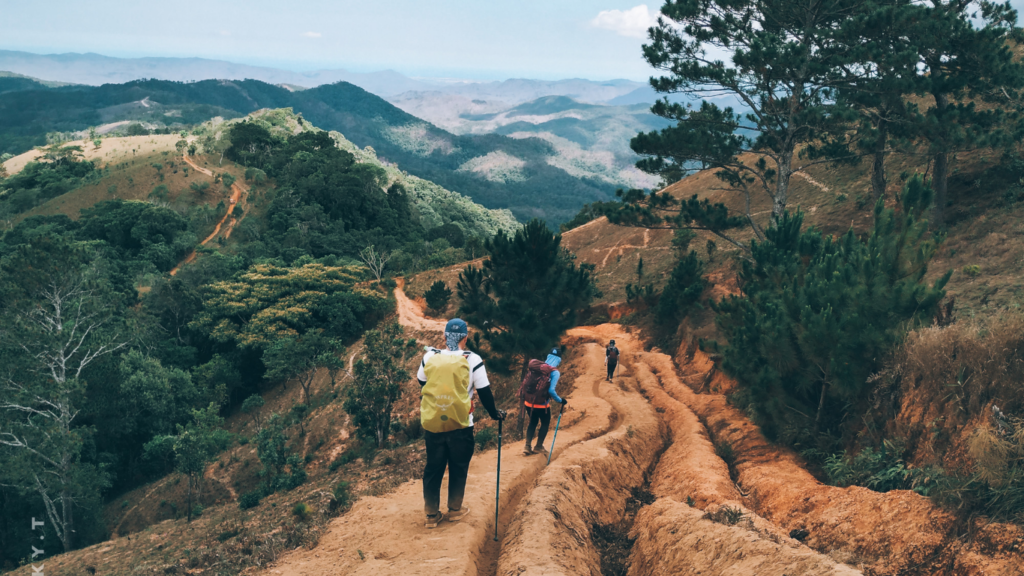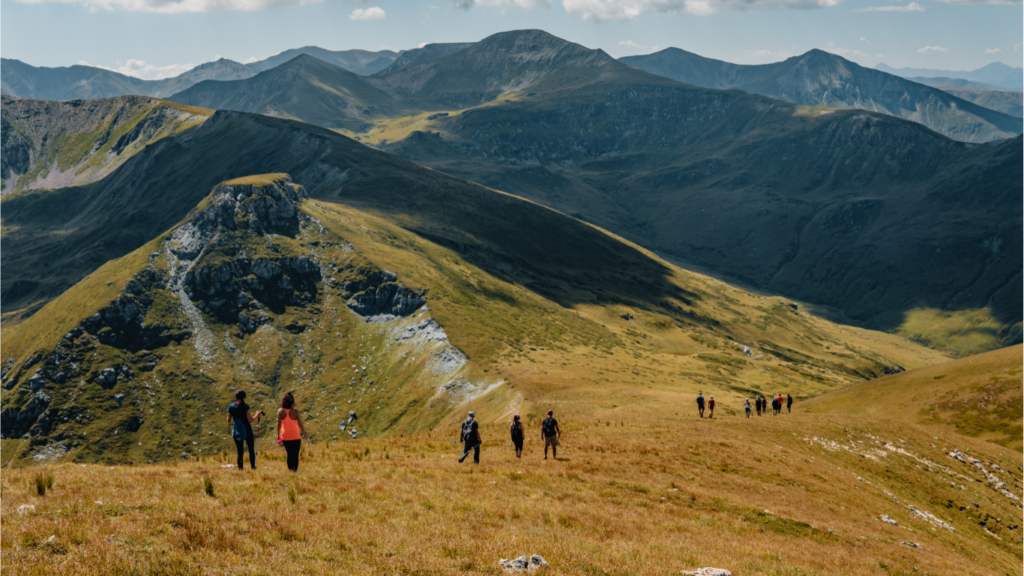Overview of Day Hikes
Day hikes offer a perfect blend of adventure and accessibility. They provide an excellent opportunity to explore stunning landscapes within a limited timeframe. Each hike’s unique features contribute to an unforgettable experience without requiring overnight camping.
Scenic Diversity
Day hikes come in various scenic types ranging from coastal pathways to mountainous trails. Coastlines like Big Sur in California offer mesmerizing ocean views and rugged cliffs. Mountainous regions such as the Rockies provide alpine meadows, striking peaks, and serene lakes. Forested trails like those in the Pacific Northwest immerse hikers in lush greenery, offering a sense of tranquility and isolation.
Difficulty Levels
Day hikes cater to different fitness levels, ensuring everyone can find a suitable trail. Easy trails like the Mist Trail in Yosemite offer gentle slopes and well-marked pathways. Moderate trails like Angel’s Landing in Zion National Park challenge adventurous hikers with steep sections and narrow ridges. Strenuous hikes like Half Dome in Yosemite demand peak physical fitness and mental fortitude, especially with its final ascent via cables.
Seasonal Variations
Seasonal changes significantly impact the hiking experience. Spring hikes in places like the Great Smoky Mountains showcase colorful wildflowers. Summer hikes, such as those in the Swiss Alps, offer clear skies and expansive vistas. Fall excursions in New England present vibrant foliage, with trails blanketed in red, orange, and yellow leaves. Winter hikes in locations like Banff National Park in Canada transform landscapes into snowy wonderlands.
Wildlife Encounters
Hikers often encounter various wildlife along the trails. Coastal areas feature seabirds, sea lions, and even whales. Forested regions host deer, squirrels, and occasionally bears. Mountainous terrains are home to marmots, pikas, and mountain goats. Always maintain respect for local wildlife by observing from a distance and following park guidelines.
Essential Tips
Preparation ensures a safe and enjoyable hiking experience. Carry essential gear, including a map, water, snacks, first aid kit, and appropriate clothing. Check weather forecasts and trail conditions. Inform someone of your hiking plan and expected return time. Respect nature by following Leave No Trace principles, ensuring the trails remain pristine for future adventurers.
Day hikes provide a unique way to explore breathtaking landscapes. With diverse scenery, varying difficulty levels, seasonal pleasures, wildlife encounters, and essential preparation, these hikes offer something for everyone. Whether you’re a seasoned hiker or a novice, day hikes can deliver unforgettable adventures and moments of awe.
Essential Features of a Breathtaking Hike

A breathtaking hike must combine elements that elevate the overall experience. Scenic views, unique natural features, and appropriate trail difficulty all contribute to making a hike memorable.
Scenic Views
Scenic views turn an ordinary hike into a visual feast. Sweeping vistas of mountains, valleys, and coastlines create lasting memories. For example, the panoramic views from the summit of Mount Tamalpais in California capture the San Francisco Bay Area and beyond. Make sure the hike’s route offers multiple vantage points to enhance the visual experience.
Unique Natural Features
Unique natural features distinguish a hike from others. These can include striking rock formations, crystal-clear lakes, and old-growth forests. One standout example is the geological wonder of the Wave in Arizona, with its surreal rock formations. Another one is the Mauna Kea trail in Hawaii, featuring volcanic craters and stargazing opportunities. These features not only add beauty but also provide educational insights into the natural world.
Trail Difficulty and Accessibility
Trail difficulty and accessibility ensure that the hike matches the hiker’s skill level and physical capability. Easy trails like the Blue Ridge Parkway in North Carolina offer gentle inclines suitable for beginners. More challenging trails such as the Kalalau Trail in Hawaii require advanced fitness levels but reward with unparalleled landscapes. Include information on trailheads, parking, and seasonal accessibility, as these factors are crucial for planning an enjoyable hiking trip.
Each of these elements contributes to the allure of hiking, making it a cherished outdoor activity for many.
Top Day Hikes in North America
Day hikes in North America offer some of the most stunning landscapes. Explore these top trails to experience nature’s beauty firsthand.
Yosemite National Park, California
Yosemite National Park provides iconic hiking experiences. The Mist Trail leads hikers to Vernal and Nevada Falls. The trail spans 5.4 miles and showcases mesmerizing waterfalls. Glacier Point Road offers a shorter hike, Sentinel Dome, providing panoramic views of the park’s granite domes.
Zion National Park, Utah
Zion National Park boasts the famous Angel’s Landing hike. This 5-mile trail takes hikers up a steep path, ending with a challenging rock scramble. The reward is a majestic view of Zion Canyon. For a different experience, the Narrows offers a river hike through towering canyon walls, covering up to 10 miles.
Banff National Park, Canada
Banff National Park features the popular Johnston Canyon trail. This route stretches 3.1 miles and passes through a stunning canyon with several waterfalls. Another great option is the Plain of Six Glaciers trail, an 8-mile hike with breathtaking alpine scenery and glacier views.
These day hikes in North America promise unforgettable experiences for outdoor enthusiasts.
Must-Visit Hikes Worldwide
Exploring global trails can offer incomparable landscapes and unforgettable experiences. Below are some must-visit hikes known for their breathtaking scenery.
Tongariro Alpine Crossing, New Zealand
Tongariro Alpine Crossing, located in Tongariro National Park, is often dubbed one of the world’s best one-day hikes. This 19.4-km trail features volcanic landscapes, emerald lakes, and panoramic views. Hikers encounter terrains ranging from barren volcanic craters to lush, green forestland. Trekking through this diverse environment is evidence of New Zealand’s geological wonders.
Trolltunga, Norway
Trolltunga, or “Troll’s Tongue,” is an iconic rock formation overlooking the Ringedalsvatnet lake. This strenuous 28-km round trip hike elevates hikers to 1,100 meters above sea level. The trail offers views of fjords, glaciers, and mountains. Reaching the Troll’s Tongue guarantees a photo opportunity that captures Norway’s awe-inspiring natural beauty. For safety, it’s advisable to attempt this hike between June and September.
Cinque Terre, Italy
Cinque Terre in Italy provides a picturesque hike through five historic coastal villages. The most famous trail, Sentiero Azzurro (Blue Trail), extends about 12 km. Hikers experience stunning views of the Mediterranean Sea, terraced vineyards, and colorful cliffside homes. Each village offers charming rests, with opportunities to savor local cuisine. This hike beautifully encapsulates Italy’s unique landscapes and culture.
These worldwide hikes offer unparalleled natural beauty and diverse terrains. Whether trekking volcanic routes in New Zealand, climbing to iconic rock formations in Norway, or walking through scenic Italian coastal villages, each hike presents a unique adventure for day hikers seeking breathtaking landscapes.
Hiking Tips for an Unforgettable Experience
Planning a successful day hike involves more than just choosing a trail. Follow these tips to ensure a memorable adventure.
Preparation and Packing
Preparation starts with researching the trail. Learn about its length, elevation gain, and terrain. Check recent trail reports for current conditions. Pack essentials such as:
- water
- snacks
- a first aid kit
- a map
Layer clothing to adjust for changing weather. Bring a hat and sunscreen for sun protection. A lightweight, waterproof jacket keeps you dry in unexpected rain. Hiking boots with good traction prevent slips on varying surfaces. A comfortable backpack evenly distributes weight.
Safety and Navigation
Stay informed by checking the weather forecast before heading out.
- Share your hiking plan with someone if the trail is isolated.
- Stick to marked paths to avoid getting lost.
- A map and compass are essential for unmarked trails.
- A GPS device or smartphone app with offline maps adds an extra layer of security.
- Carry extra batteries or a portable charger.
- A whistle and signal mirror help in emergency situations.
- Stay aware of your surroundings to avoid wildlife encounters.




